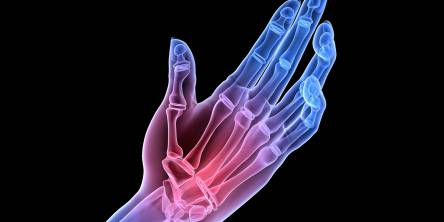10 Causes to Visit a Podiatrist

A podiatrist is a medical expert who focuses on foot and ankle care. There are various reasons you may need to see one.
1. Foot or Heel Pain
Foot or heel pain is a common reason for visiting a podiatrist. Foot or heel discomfort can be caused by a variety of factors, including injuries, overuse, and medical diseases such as plantar fasciitis, heel spurs, Achilles tendinitis, and arthritis. A podiatrist can evaluate the source of your foot or heel discomfort and offer the best treatment, which may involve R.I.C.E. or P.O.L.I.C.E., stretching exercises, physical therapy, medication, or customized orthotics.
2. Foot and Ankle Injuries
Sprains, strains, and fractures are frequent foot and ankle injuries resulting from various activities, including sports, exercise, or simply walking on uneven ground. A podiatrist can determine the extent of the injury and recommend proper treatment, which may involve immobilization, physical therapy, non-surgical treatments, or surgery in extreme situations.
3. Bunions
Bunions are bony lumps that develop at the base of the big toe, causing it to bend toward the other toes. They can cause pain and make it difficult to wear shoes. A podiatrist can advise you on how to treat bunions, including wearing special shoes, using orthotics, or, in severe situations, surgery (bunionectomy).
4. Hammertoe
Hammer toe is a condition in which a toe bends downward at its middle joint. The second toe is the most likely to be damaged, however the deformity can also develop in other toes. Occasionally, more than one toe is impacted.
5. Flat Feet
Flat feet (or flat feet) occur when the arch of the foot collapses, causing the entire foot to contact the ground. This can cause pain and lead to more foot issues. A podiatrist can diagnose and treat flat feet using orthotics, physical therapy, or other methods.
6. Ingrown Toenails
Ingrown toenails develop when a toenail's edge grows into the skin, resulting in pain, redness, and edema. If left untreated, ingrown toenails can get infected. A podiatrist can remove the ingrown section of the nail and advise on how to avoid it from happening again.
7. Fungal Toe Infections
Fungal toenail infections can be ugly, causing the nails to thicken, discolor, and break. They may also be difficult to treat with over-the-counter medications. A podiatrist can diagnose and treat fungal toenail infections using prescription drugs, laser therapy, or other methods.
8. Plantar Warts
A virus causes plantar warts and manifests as tiny, rough growths on the soles of the feet. They can be unpleasant and difficult to eradicate using over-the-counter remedies. A podiatrist can eradicate plantar warts utilizing a variety of treatments, including laser therapy.
9. GoutGout
is a type of arthritis. It causes discomfort and swelling in the joints. For many people, it begins with the big toe. Gout is treated with drugs, frequent exercise, and weight loss.
10. Diabetic Foot Care
Diabetes can damage the nerves and blood arteries in the foot, resulting in loss of sensation and poor circulation. This can make it difficult to detect pain, heat, or cold in the feet, increasing the likelihood of developing foot ulcers, infections, and other consequences.
Diabetic foot problems can range from moderate to severe and may include neuropathy, peripheral artery disease, foot ulcers, Charcot foot, and infections. Preventing and managing diabetic foot problems is critical to avoiding catastrophic complications. People with diabetes should evaluate their feet regularly and report any injuries or changes to their doctor or podiatrist. Good foot care entails keeping feet clean and dry, wearing comfortable, well-fitting shoes, and avoiding walking barefoot. Regular foot checks by a healthcare practitioner can also help detect and manage foot problems as soon as feasible.
Similar Articles
Veins on the skin that produce swelling may indicate varicose veins. Varicose veins are a vein disorder, and their role is to return blood from the leg to the heart. The specific cause of varicose veins, a prevalent condition, is unknown.
A healthy spine is the foundation of a functioning body. It supports your frame while allowing you to bend, flex, and move more freely. However, most people neglect the importance of spine health until they have a back condition.
Whether you're having trouble moving body parts or experiencing worsening joint discomfort, an orthopedic doctor can help. They can treat anything from a minor strain to complex treatments such as shoulder replacement. The appropriate treatment from an orthopedic expert at the right time might relieve your pain and improve your symptoms in less time.
When it comes to trauma, professionals in the mental health sector readily admit that no single style of therapy or intervention is appropriate for every case or individual.
Rheumatoid arthritis (RA) is a type of autoimmune disease that occurs when the body's immune system attacks the lining of joints, causing inflammation and causing symptoms like pain and stiffness. RA usually affects both sides of the body in a similar way, but small joints of the hands and feet are often affected first, often knuckle joints of the fingers.
An electroencephalogram (EEG) is a test that measures the electrical activity in the brain. Healthcare experts utilize it to evaluate and comprehend neurological illnesses, sleep disorders, and brain damage.
So, your back decided to stage a mutiny and gift you with a herniated disc. Lovely. Now what? If you’re imagining a future filled with endless discomfort and groaning every time you get out of bed, don’t fret. There are plenty of ways to tackle a herniated disc and get back to living your best, pain-free life.
Back pain – it’s not just a matter of “I lifted a heavy box, and now my back hurts.” It’s often the result of a complex dance between our minds and bodies, with stress, anxiety, and emotions playing lead roles. If you’ve ever woken up with a stiff back after a tough week or felt your spine twinge just from reading a long email chain, you’re not alone.
Chronic pain is a medical problem that affects many people around the world. Unlike acute pain, which is a short-term response of the body to tissue damage, chronic pain lasts longer, often without obvious physical damage. It can last from several months to several years, and its consequences can affect all aspects of a person's life









